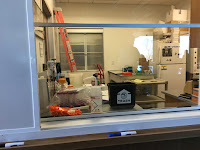 |
| Radical Equations |
In both cases, it is young people who recognized that a certain set of knowledge leads to better opportunities, whether these are political (voter registration, voting rights, voting access) or economic (Algebra as the gatekeeper course in high school for access to education geared towards computing), and through their organization they were able to force the established power structure to change culture (albeit very slowly and hesitantly).
As Math is too often seen as a skill that you either have or you don't, connecting Math learning with relevant cultural and historical experiences has been a successful strategy to get poor, mostly minority students interested in Algebra. While I think you should read the book yourselves, here are the five steps for the Algebra Project curriculum:
1. Physical Events -- the trip has at least two purposes. It gives students a real experience with a cultural or historical moment, and it gives the physical experience of traveling along a certain set of paths, covering certain distances.
2. Pictorial Representation/Modeling -- students need to find an individual way of translating the trip experience into something abstract, so after the travel comes the reflection that is based on an image or model
3. Intuitive Language/"People Talk" -- students continue reflecting on the trip by using their own language.
4. Structured Language/"Feature Talk" -- the reflection of step 3 is analyzed for mathematical features such as start, finish, direction, distance
5. Symbolic Representation - the final step is turning the findings into symbols that can be understood by the whole group.





